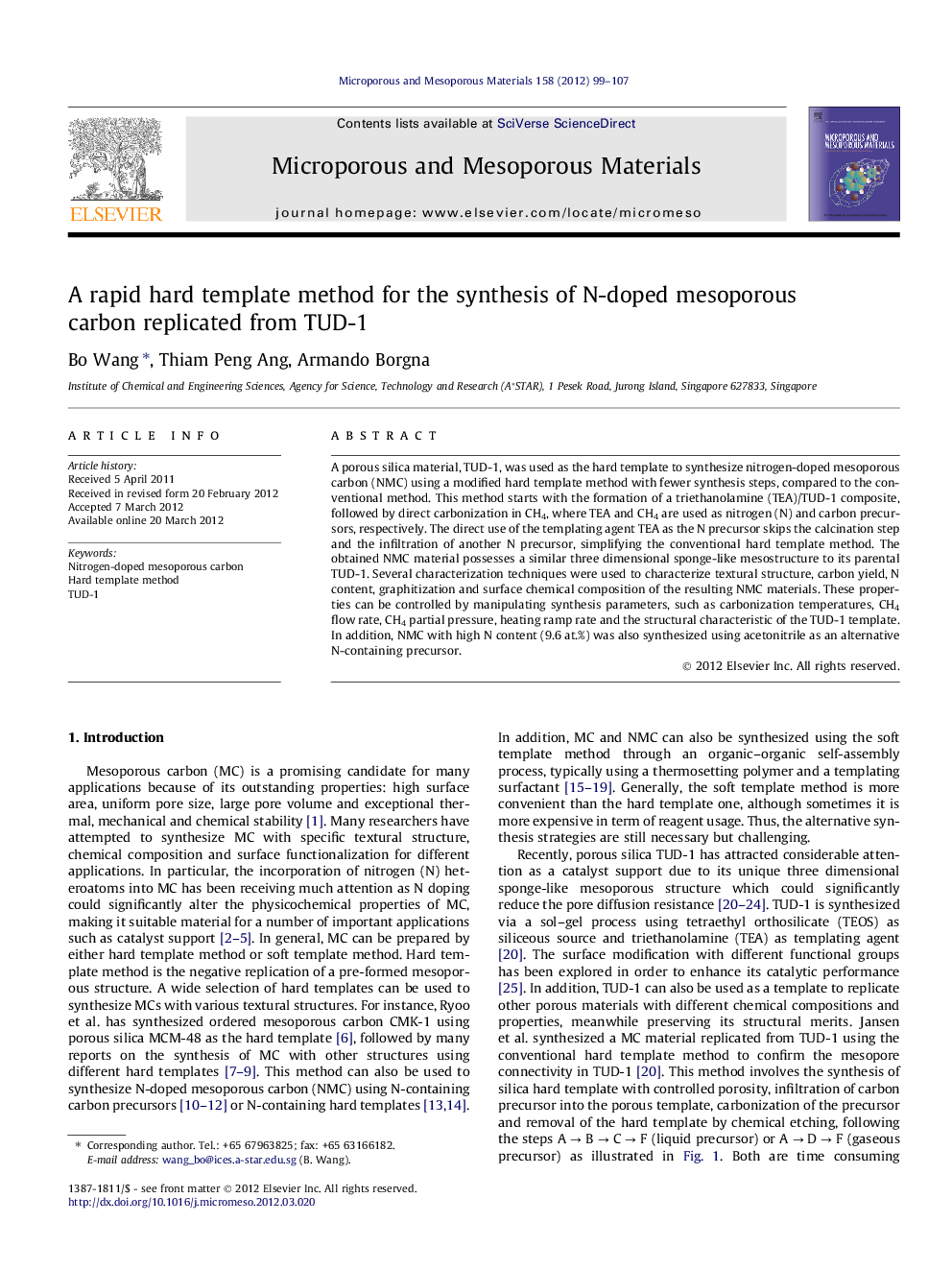| Article ID | Journal | Published Year | Pages | File Type |
|---|---|---|---|---|
| 74355 | Microporous and Mesoporous Materials | 2012 | 9 Pages |
A porous silica material, TUD-1, was used as the hard template to synthesize nitrogen-doped mesoporous carbon (NMC) using a modified hard template method with fewer synthesis steps, compared to the conventional method. This method starts with the formation of a triethanolamine (TEA)/TUD-1 composite, followed by direct carbonization in CH4, where TEA and CH4 are used as nitrogen (N) and carbon precursors, respectively. The direct use of the templating agent TEA as the N precursor skips the calcination step and the infiltration of another N precursor, simplifying the conventional hard template method. The obtained NMC material possesses a similar three dimensional sponge-like mesostructure to its parental TUD-1. Several characterization techniques were used to characterize textural structure, carbon yield, N content, graphitization and surface chemical composition of the resulting NMC materials. These properties can be controlled by manipulating synthesis parameters, such as carbonization temperatures, CH4 flow rate, CH4 partial pressure, heating ramp rate and the structural characteristic of the TUD-1 template. In addition, NMC with high N content (9.6 at.%) was also synthesized using acetonitrile as an alternative N-containing precursor.
Graphical abstractFigure optionsDownload full-size imageDownload as PowerPoint slideHighlights► We develop a rapid method for synthesis of N-doped mesoporous carbon. ► Triethanolamine and methane are N and carbon precursors. ► Produced N-dope mesoporous carbon possesses similar structure to TUD-1. ► Structure and N content can be controlled by adjusting synthesis conditions.
